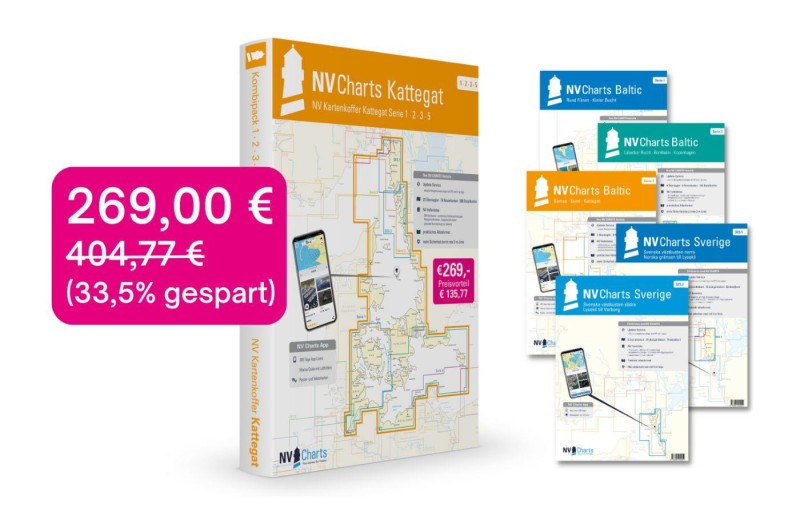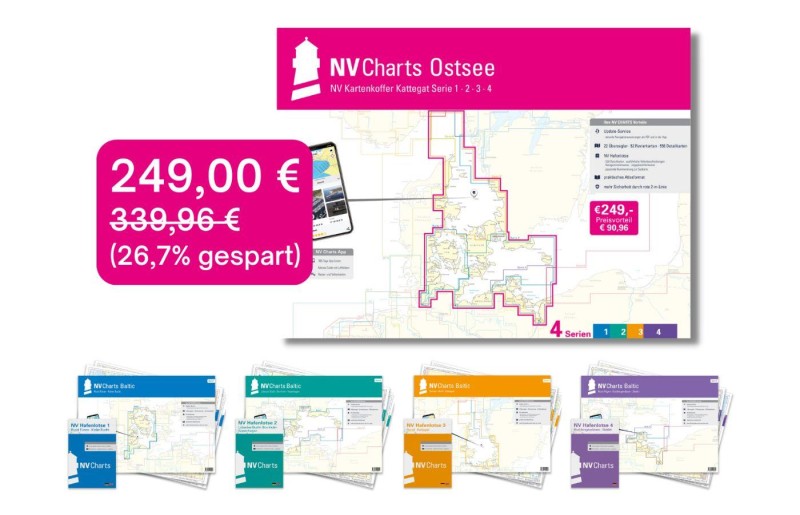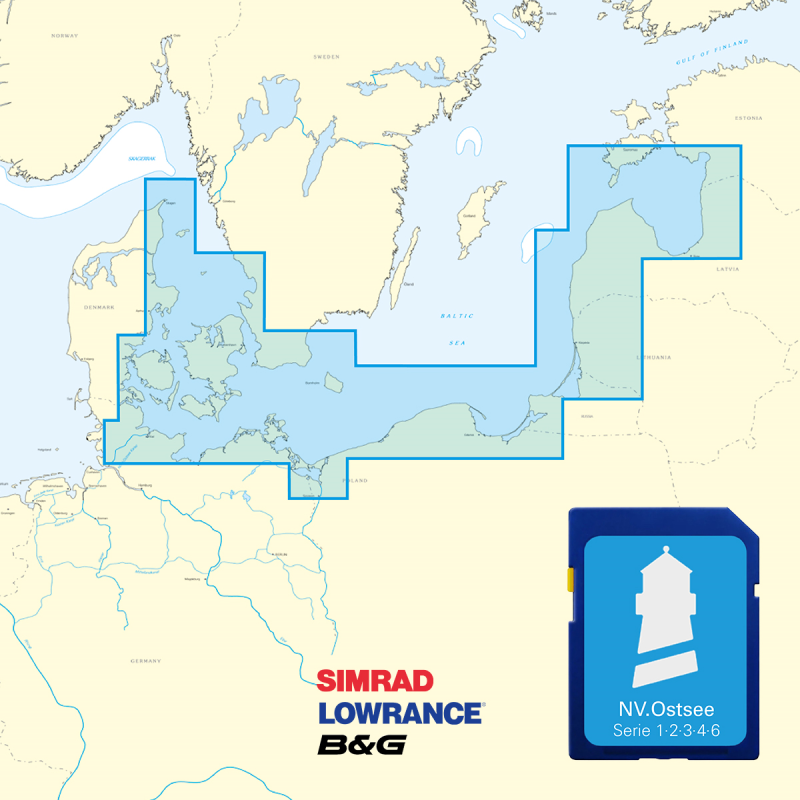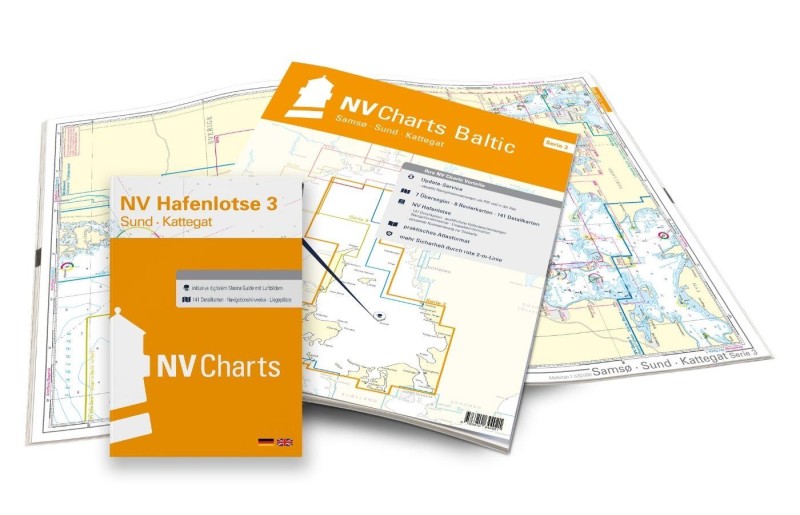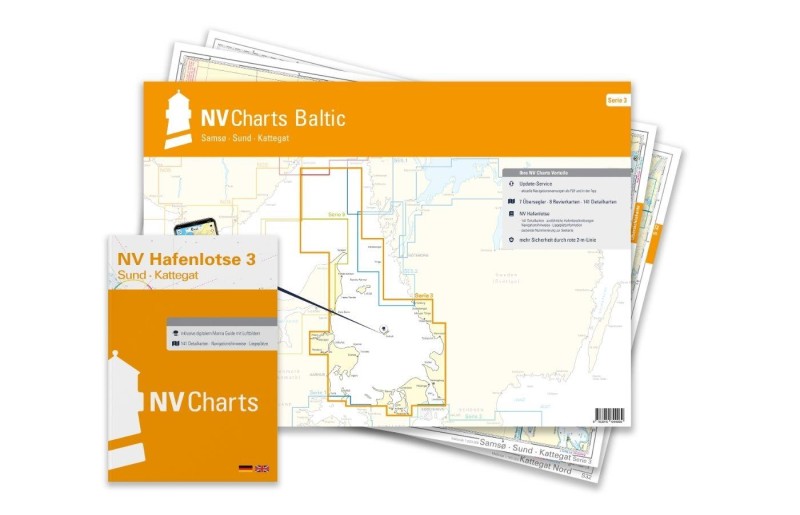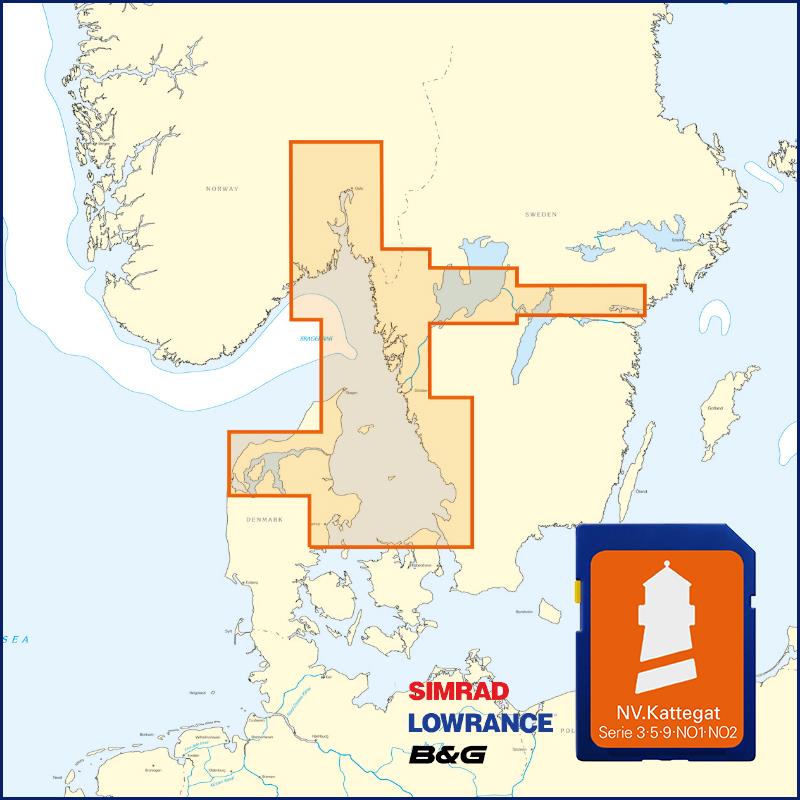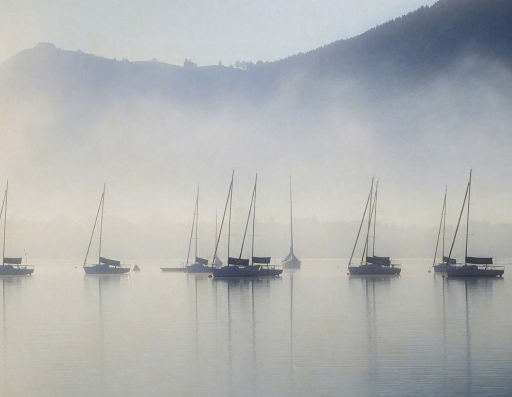Langør
Marina near Langør
Latitude
55° 54’ 38” NLongitude
10° 38’ 30.5” EDescription
Extremely idyllic fishing and pleasure boat harbour in Stavns Fjord, which is scenically one of the most beautiful areas in Denmark.
NV Cruising Guide
Navigation
The approach via the partly narrow and unlit fairway is only recommended during the day. Coming from the north, you steer from the first pair of buoys at approx. 176° to the next green buoy in front of the Lilleøre headland, which you then round at a distance of approx. 50 - 100 metres. After passing the pair of buoys in front of the harbour, you enter the harbour to the west. Coming from the east, you reach Langør via the buoyed "Lindholm Løb". You keep well clear of the 1.8 m point with a westerly course, and then turn into the fairway at Lilleøre.
Berths
Guests can either find a free box in the harbour or moor alongside the outer bridge at a water depth of 2-3 m.
Anchoring:
In the bay immediately north of the harbour you will find a very sheltered anchorage at a water depth of 2 - 5 m.
Surroundings
A modest selection of groceries and bread service is offered by the kiosk at the harbour, possibly also salmon trout from the fish farm at Kyholm. There are no other supply possibilities. However, you can make good shopping trips to Nordby with a bicycle rented at the harbour. The entire Stavns Fjord area is a wildlife and archaeological reserve. There are many protective regulations, for example, it is forbidden to enter the islands, fishing and diving.
NV Land Guide
The population of Langør now stands in stark contrast to the number of pleasure boaters who visit Stavns Fjord every year: 30 to 3,000. But although the days when the small harbour was one of the "real insider tips" are long gone, the fjord and settlement have lost none of their fascination. In the case of the village, it is above all the isolated location at the end of a long causeway; in the case of the bay, it is the unmanageability of a miniature island world that attracts port and anchorage visitors.
It is obvious that this environment was tailor-made for the Vikings. Protected from enemy fleets by shoals and reefs, they entrenched themselves behind offshore islands in a fortress on the largest islet in the fjord, Hjortholm. However, only insignificant remains of the castle still exist. It is not possible to look at the remains anyway, because it is forbidden to enter the islands and reefs, which are all uninhabited and protected. Remains of Stone Age settlements have been found on Hjortholm. Remains of houses, stables and even granaries attest to the beginnings of farming in a time when fishing and hunting formed the basis of the diet.
The ban on entering the islands is partly to protect the "spotted seal", which thrives in small but steady numbers in the fjord and on the offshore Bosserne Flat. 2000 eider geese breed every year in the protected area under ideal breeding conditions. Other breeding birds include the common grebe, oystercatcher, greylag goose, herring gull and great black-backed gull. Stavns Fjord also serves as a resting place for many birds. Among them are several species of ducks, mute swan, cormorant, coot and brent goose.
A major threat to the unique nature around Langør comes from the sailors. Conservationists therefore have them particularly in their sights - all the more reason to adhere to the prohibitions and not to leave the paths on shore excursions. This also applies to the beach meadows at Lilleøre and the paths along the fjord shore. From the shore path running to Stavns, there is nevertheless plenty to see of the charming fjord landscape, also known as the "Drowned Hills", because the islands are basically the tops of ice-age moraine hills - formed during the great ice melt. It wasn't until the end of the Ice Age that the area, which covers around 20 square kilometres, was flooded by the sea. The channel, which stands out darkly against the shallow water of the fjord, is an Ice Age relic. The tidal current of the fjord moves in this former meltwater channel.
What extraordinary strategic importance Stavns Fjord had for the Vikings can be seen in an impressive waterway, of which a dead-straight trough remains. Kanhave canal is the name of this interesting testimony from the Viking Age, which was most likely built to keep an escape route open for a fleet in the fjord or to enable them to launch surprise ambushes. Moreover, the castle built on Hjortholm could be reached from two sides. Sea blockades by the enemy were ineffective.
The Viking Canal is today considered the first artificial waterway in northern Europe. Its construction is dated to 725 AD. Historians highlight the engineering feat, which was extraordinary by the standards of the time, and admire even more the organizational feat that such a project entailed. The canal was 800 metres long, eleven metres wide and (depending on the water level) almost two metres deep. The bank stabilisation of the canal must have been particularly hard work. Thousands of piles prevented the bank from slipping into the canal. A miniature model in the museum at Tranebjerg (see also Ballen) depicts the structure as it looked when King Harald Blauzahn and his fleet sailed through the canal. The former cut through the island of Samsø at its narrowest point is still the cultural border between "Prussian" and "Bavarian" Samsø for local patriots - the Samsø "Weißwurstgrenze", so to speak. For centuries, the North Samsøers (or -samsingers) and the South Islanders lived in their own world, although the once separate parts of the island had long since grown together. Only a large, barren expanse of heath separated the two populations. The distance from Nordby to Tranebjerg was twice the distance from Nordby to Beijing was a common saying that described the inner distance between the North and South Islanders. It was not unusual for sailors to have seen the whole world without having been to Nordby or, conversely, to Tranebjerg. Different dialects and completely different cultural and social characteristics developed. The other side of the heath, however, was only considered a foreign country until danger threatened from outside via the water. Against the Swedes, the islanders held together like pitch and brimstone in 1658 and finally drove them off the island in 1660.
From the function of the fjord as a naval base, the island name Samsø is said to originate - originally Samlings-Øen: the island where people gather. The fjord and offshore islands retained their strategic importance into the 19th century.
Located off the entrance to Stavns Fjord, Kyholm literally translates as "Island of Cows", but it was an epidemic island for infected Jutland seamen in the 18th century, and 100 years later, during the English Wars, a fort with a redoubt, 30 cannons and over 300 soldiers. This line of defence against the strong naval force of the English also included the redoubts on the Lilleøre headland and on the seven-kilometre-long Besser Reef, which wraps around the fjord like a protective arm. There are said to have been only isolated skirmishes with the English ships. The respect of the English for the strong batteries was too strong, claim the chroniclers. In 1831 the "Isle of Cows" was again a quarantine station, this time for sailors suffering from cholera. In smoking rooms people were smoked like herrings, the only known remedy against the epidemic at that time. 19 people nevertheless found their final resting place in the islet's small cemetery.
But back to Langør, which was Samsø's most important port until 1880. Saxo, the famous Viking chronicler, was already fond of it and described the harbour as a place where one was safe from storms and from enemies, because one could see the adversaries approaching in time and there were plenty of places to retreat. In the heyday of Samsø's seafaring, Langør was a bustling place, although the trading post was not built on until the beginning of the 18th century, when the redoubt at Lilleøre was built against the hostile Swedes. Horse-drawn carts rolled along a poorly fortified causeway to the harbour, which was flooded at high tide. The merchants built warehouses for themselves, after which a customs station was also built to ensure that the treasury received its dues.
The Samsø people were attached to the seafaring life for generations. It was common to be a farmer and a sailor at the same time, or a blacksmith and a fisherman. There are still a few fishermen here. They make a living from catching eel and herring. But also turbot, crabs and lobster can be on your menu if you do business with one of the fishermen. At Langør they even breed sea trout in large fish traps. At Havnehagen, you pass the farmed salmon traps as you sail into the fjord.
The settlement's few houses are mainly inhabited in summer. In winter, when the tourists are absent, the place is said to have barely 15 inhabitants. The merchant obviously could not exist on summer visitors alone. The kiosk and snack-bar owner at the harbour has partly taken over his part, so that one can supply oneself with food to a limited extent. You can even buy the mentioned farmed salmon at the kiosk and enrich your menu with a delicacy. And in order to avoid a protein-heavy menu, one should get on one of the bicycles that are rented around the corner and buy the vitamin supplements from the farmers during the bicycle tour. On the roadside, in front of many farms, there are stands offering fresh fruits and vegetables. Well supplied you can then easily cope with the fact that there is no restaurant in Langør.
Nearby natural beauties are the long sandy beach at Lilleøre with its beach dunes and the heath area "Østerhede" and "Nordbyhede" stretching along the beach. An ecological "oasis" of a special kind is the small lagoon of Lilleøre, which lies between the village and the chapel on the east side of the dam. It occasionally dries out, revealing the remains of countless lugworms. Stavns Fjord is not only a nature reserve, but also an archaeological reserve where, for example, the first prehistoric kitchen waste on the island has been discovered near the little church of Langør. (Incidentally, there is an excellent view over the fjord and its islands from the hill of the chapel northwest of Langør, which was built in 1925. The sail training ship "Copenhagen", which disappeared without trace in the 1930s, hangs in the church as a votive vessel.
Jewellery from the Viking Age has been found on the small peninsula of Hesselholm, opposite the chapel. Wreckage remains of Viking boats have been discovered among the fjord islands under the surface of the water. A number of implements also found on the fjord bottom can be seen in the museum in Tranebjerg.
Marina Information
| Max Depth | 3 m |
Contact
| Phone | +45 86591203 |
| Website | https://www.visitsamsoe.dk |
Surroundings
Electricity
Water
Toilet
Shower
Restaurant
Crane
Internet
Grocery
Ramp
Public Transport
Bikerental
Garbage
Comments
You can add comments with the NV Charts App (Windows - iOS - Android - Mac OSX).
You can download the current version at nvcharts.com/app.
Buy nv charts covering this place Clicking one of the products will open the nv charts shop.
Places nearby
Related Regions
This location is included in the following regions of the BoatView harbour guide:

